Common Problems
More than one-half of all American children and adults suffer from one or more of these problems and could benefit from orthodontic treatment. These are some of the lifelong
benefits you may receive if your teeth are properly arranged.
- Your teeth can be cleaned easier which leads to less cavities and gum disease. This prevents early loss of teeth.
- Wear of the teeth, particularly the biting surfaces, would be minimized.
- Discomfort in biting may be reduced or completely eliminated.
- Speech may be improved.
- The digestion process is improved by better chewing of food.
- Improved appearance.
Even though you or your child may have a nice smile, many of these problems affecting the health of teeth and gums may be present.
|
A Good Occlusion
Teeth in a person's upper and lower jaws are designed to fit together in chewing. Proper alignment of the teeth helps you chew food properly and
allows the chewing forces to be evenly distributed throughout all the teeth. | 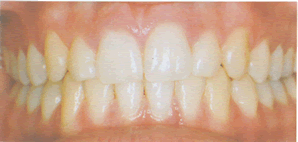 |
Malocclusions
Excessive overjet - "Buck Teeth"
Upper front teeth are forward of the lower teeth (upper front teeth protrude).
This problem may be caused by long term thumb sucking or tongue thrusting habits. The front teeth are very prone to accident and, if fractured, become severely weakened.
There is usually difficulty in closing the lips over teeth with a tendency for mouth breathing. | 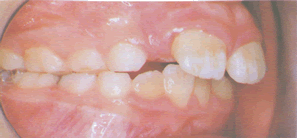 |
Impacted Teeth
Tooth eruption into the mouth of a permanent tooth is impaired. This is seen on a X-ray. Note the dark cystic area around the
crown of an impacted upper cuspid (shown by black arrow). These cysts often cause bone destruction and root loss (resorption) on neighboring teeth. These impacted teeth should generally be
brought into the mouth and placed into proper occlusion with orthodontic appliances. (Also note there is a missing permanent tooth; shown by the X). | 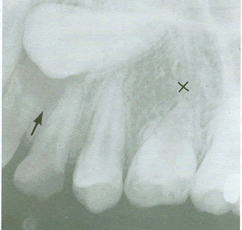 |
Open Bite
Back teeth are together with space between front teeth. This problem may be caused by long term thumb sucking or tongue thrusting
habits. A patient may not be able to effectively bite food and may tend to swallow larger than normal mouthfuls that are difficult to digest. | 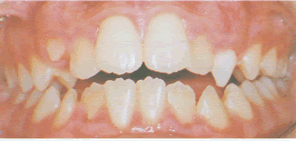 |
Overbite
Upper front teeth lap over lower front teeth too much. Lower front teeth often bite into the gums of the roof of the mouth causing
gum irritations. Food is impacted into the crevices between the gums and the teeth. This promotes gum disease and bone loss around the upper and lower front teeth. | 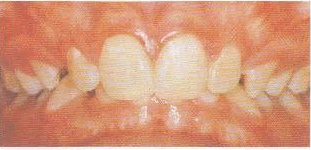 |
Spacing
Spaces between the sides of the teeth that should not be there are due to congenitally missing teeth, lost teeth, protrusion, or teeth
that are too small for the size of the jaws. Spaces allow food to be trapped between the teeth which contributes to the cause of gum and bone problems. | 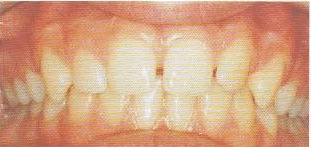 |
Cross Bite
Upper teeth bite inside the lower teeth. Forces in chewing are misdirected. Cross bite may lock the lower jaw into an improper
bite. This condition may give a person an appearance of a "bull dog" jaw and a facial expression of frowning. | 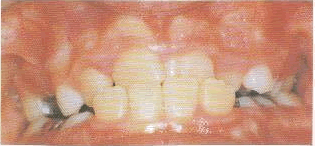 |
Crowded Teeth
Not enough room is available for all the teeth to be evenly positioned along the jawbone. Teeth are usually difficult to clean
and pockets often develop trapping food and dental plaque which causes gum disease and eventual bone loss around the teeth. Crowded teeth are often the main reason people want to have their
teeth "straightened". | 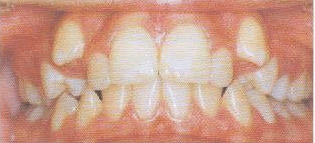 |



